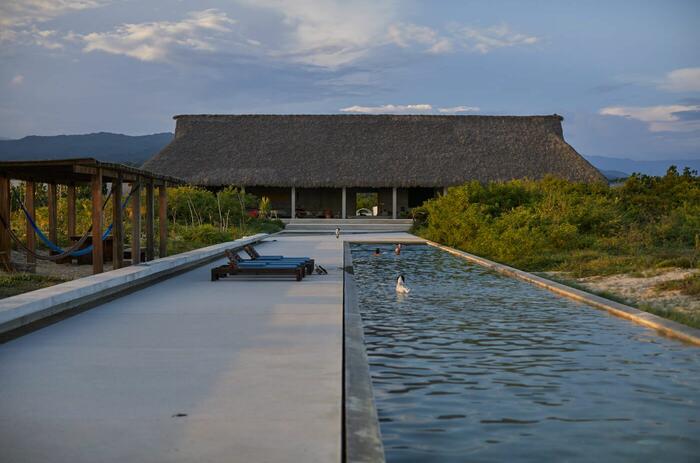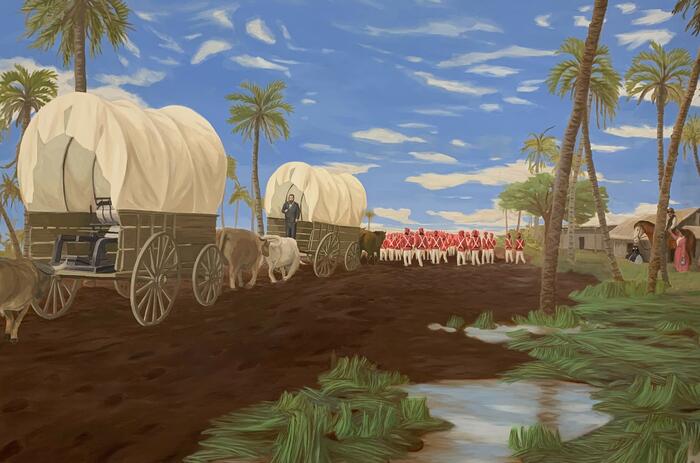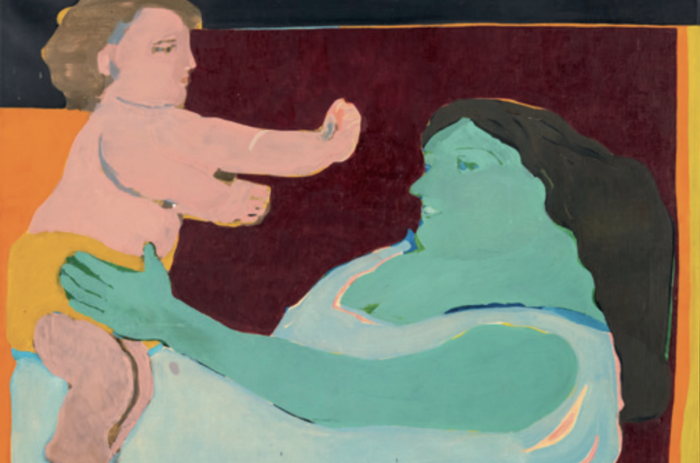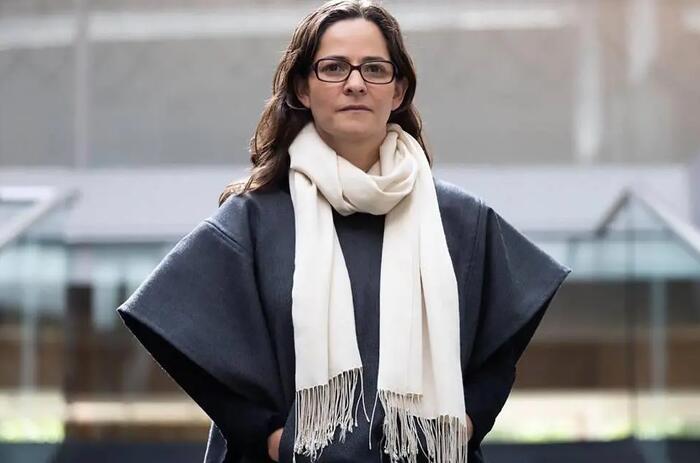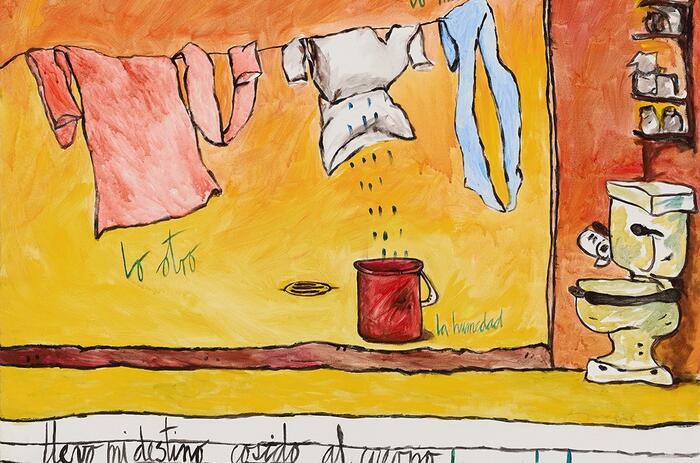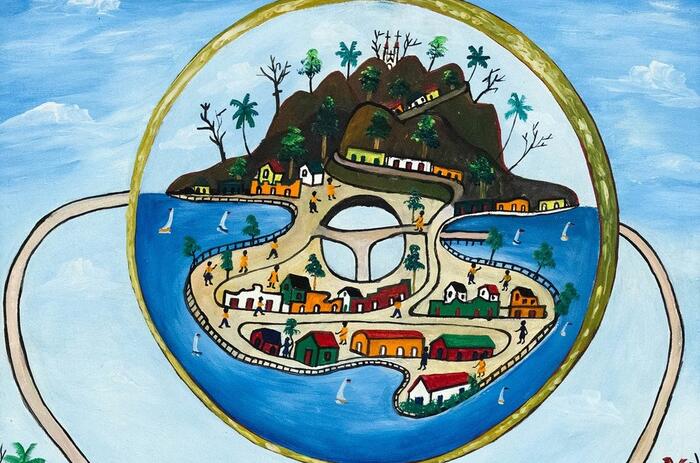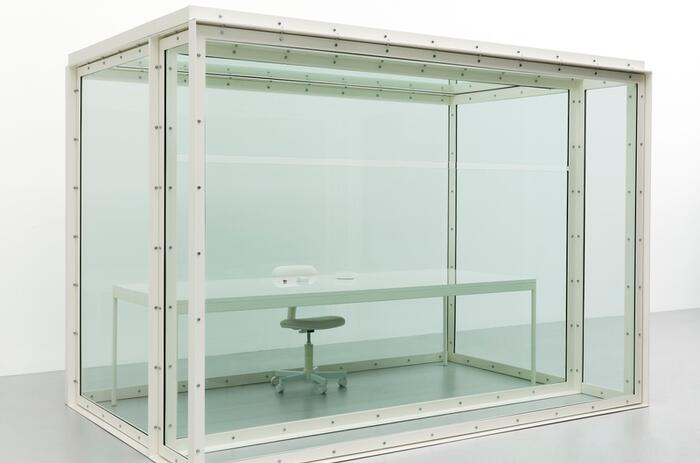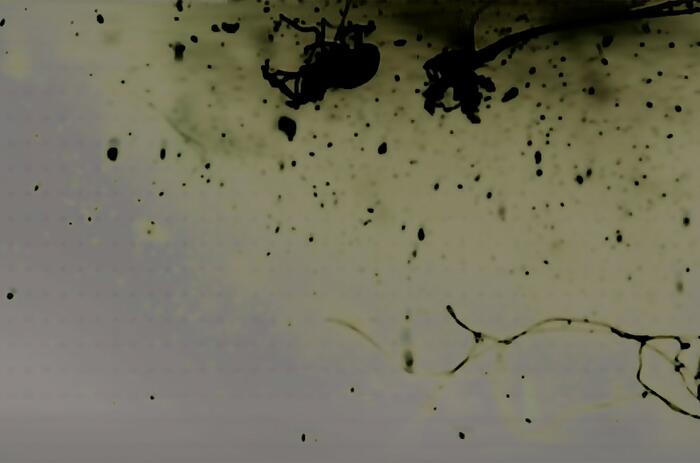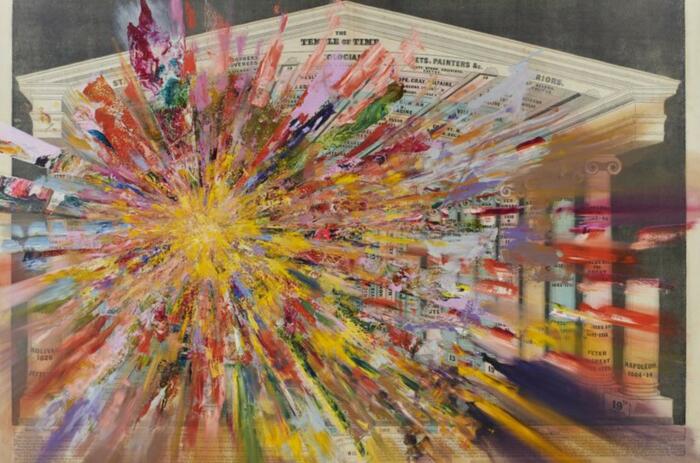PIA CAMIL: A CIRCULAR ROUTE IN MACG
Fuego Amigo, Pía Camil's exhibition at the Museo de Arte Carrillo Gil (MACG), proposes a story without beginning, in a circular form. It is curated by Mauricio Marcin.
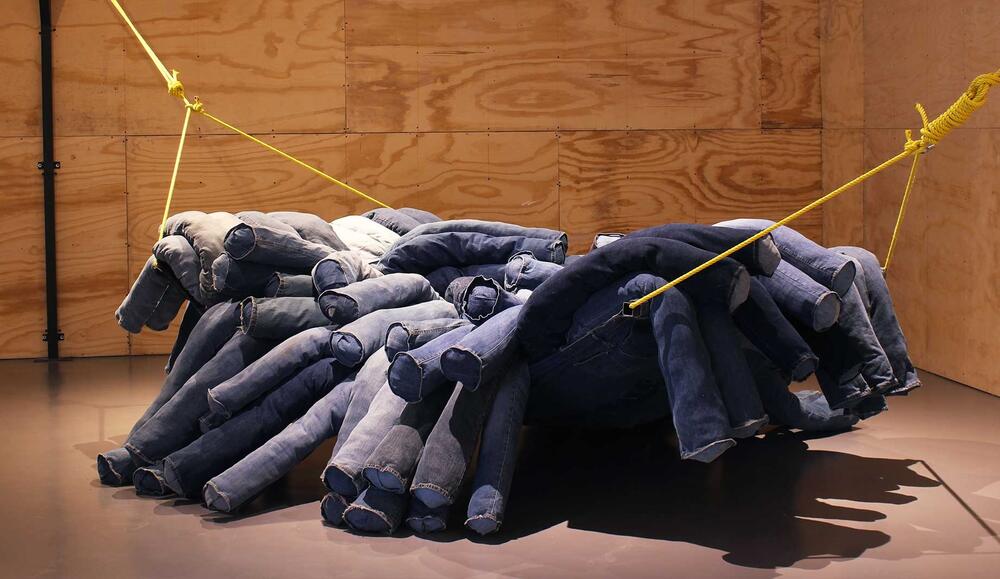
This way of exhibiting a trajectory does not intend to cancel time but to suggest another way of understanding it, beyond the sequential one; this circle proposes that what happened centuries ago is present now: the past is presented to melt history and confuse, like a magma in constant fluctuation.
The structure that sustains two decades of Pia Camil's work comes from the remains of the accidental fire in her workshop and emulates the alchemical exercise of turning lead into gold, of making and transmuting what is given to us. This circle also evokes the serpent that devours its own tail, or that turns itself inside out to swallow its own head, imposing the image of the cyclical nature of life.
From her early experimentations to date, Pía has developed a mostly collective practice. Although the works are signed under her authorship, they are made in collaboration with seamstresses, writers, designers and merchants, recognizing reciprocity and with whom she weaves lasting bonds of friendship and complicity. The works also emerge from the practice of non-economic exchange processes that rehearse forms of commerce that escape the logic of capital. Collaboration and reciprocity are more than a way of doing and are postulated as an axiom that values diversity, solidarity and cooperation of saying and doing with others.
After returning to Mexico in 2009, following a period of training in the United States and London, her works were nourished by the observation of the social and economic failure of the neo-colonial model instrumentalized by trade agreements and the furies of the free market. And, against the logic of government that pretended the developmentalist aspiration, Pia Camil trains and draws inspiration from heterogeneous peri-capitalist forms that necessity and precariousness invent to resist. Without romanticism, she locates and exposes them, to denounce the horrors and to postulate the possibilities-others that communities find. She practices an anthropology situated in urbanity.
Her move, a few years ago to a semi-rural community in the State of Mexico, is due to the pleasure of trying another way of life, or, at least, a daily life that moves away from the discourses, the rules and the productive times that capital imposes and embodies in every megalopolis.
The question then arises: is there an outside, is there a way out, a way to make a difference? In times of warlike invasions, of forced migrations, of neo-slavery exploitations, it is worth remembering all those who survive these omnipresent violence. Those of us who enjoy certain privileges must ask ourselves how we also exercise violence and inequalities, how our existence devastates and destroys, how we can contribute to establishing caring relationships with the environment as a whole.
In this new territory lies the desire, the doubt and the intention of Pia: to practice-with-art as a set of tools, knowledge, lexicons and methodologies that allow us to deepen our inner knowledge and establish interactions with the world in pursuit of its incessant re-creation.
–Mauricio Marcin.

